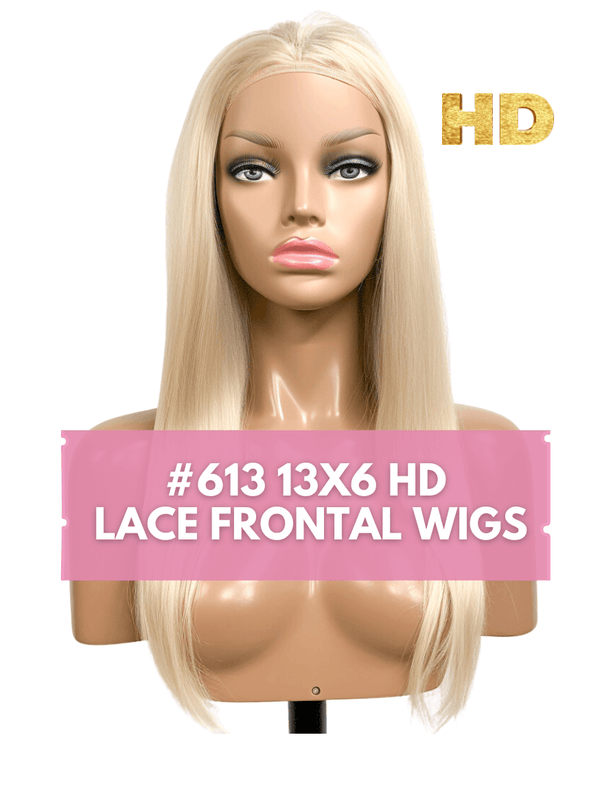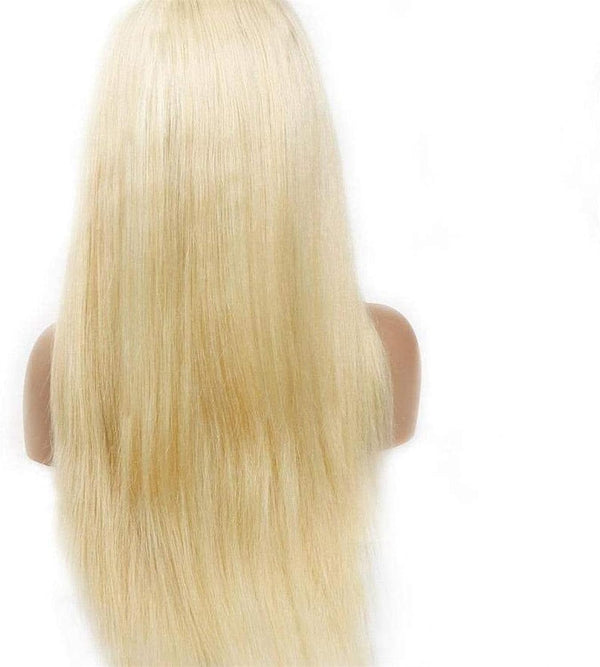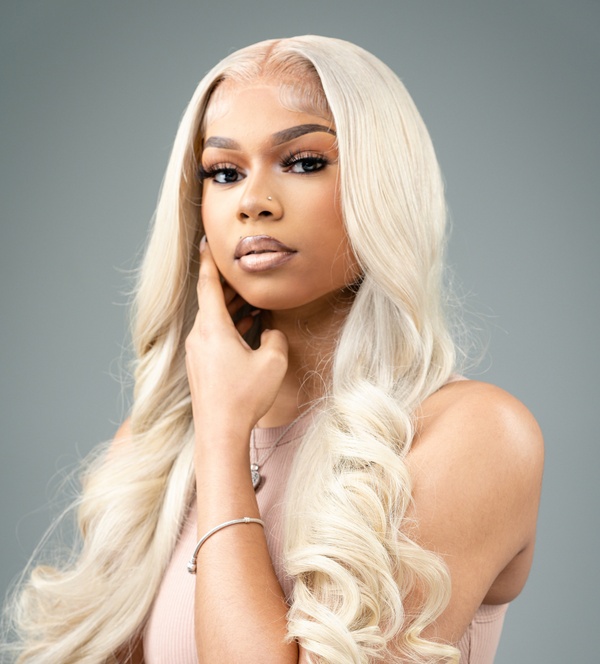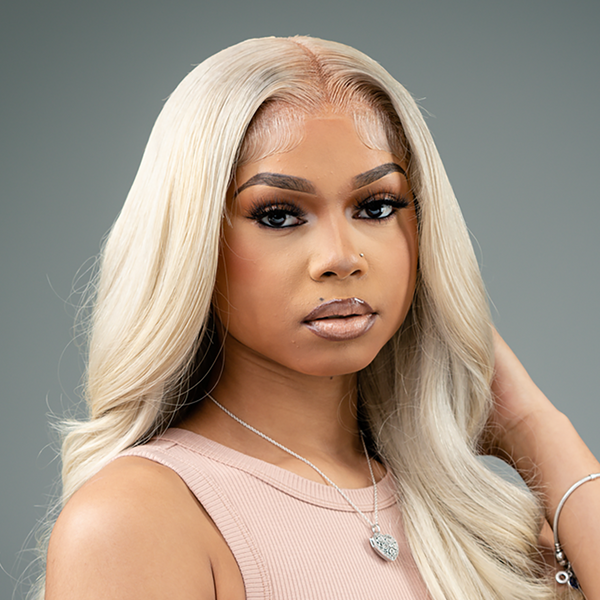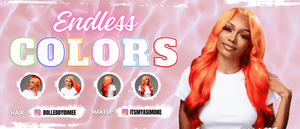
613 Collection
Blonde #613 Bundles & Combo Deals
Blonde #613 Bundles & Combo Deals
HD #613 13X6 Lace Frontal Blonde Wig 200% Density
HD #613 13X6 Lace Frontal Blonde Wig 200% Density
HD Frontal 613 Blonde Lace Frontal 13x4
HD Frontal 613 Blonde Lace Frontal 13x4
5X5 HD Lace #613 Blonde Lace Closure Wig 200% Desnity Glueless Wig
5X5 HD Lace #613 Blonde Lace Closure Wig 200% Desnity Glueless Wig
HD Lace 5x5 #613 Blonde Closure
HD Lace 5x5 #613 Blonde Closure
HD Frontal 613 Blonde Lace Frontal 13x6
HD Frontal 613 Blonde Lace Frontal 13x6
Loxx Hair HD 2x6 #613 Blonde Lace Closure Straight
Loxx Hair HD 2x6 #613 Blonde Lace Closure Straight
Hair Color Processing Disclaimer for Bundles, Wigs, Lace Items, Closures, and Frontals
At Loxx Hair, we take pride in providing premium-quality wigs, lace items, closures, and frontals to help you achieve your desired look. To ensure you are fully informed and satisfied with your purchase, please review the following guidelines and best practices for coloring and altering these products.
When coloring or altering Loxx Hair wigs, lace items, closures, or frontals, we recommend exercising care to ensure the best results. While our products are designed to achieve stunning color transformations, it’s important to follow proper techniques to maintain their quality. For the best outcome, we encourage having color treatments done by a licensed professional, as customers are responsible for any changes made to the hair.
Responsibility for Color Processing and Alterations
Customers are fully responsible for any color processes or alterations performed on Loxx Hair wigs, lace items, closures, and frontals. While we provide detailed expectations regarding the color levels our products can reach, it is crucial to follow best practices to avoid damage and achieve the best results.
Importance of Strand Testing
Before committing to a full color process or alteration, we strongly recommend testing a small strand of hair. This practice allows you to see how the hair reacts to the coloring process, ensuring you achieve the desired result without risking the entire piece. Strand testing is essential for preventing unexpected outcomes and preserving the integrity of your wigs, lace items, closures, and frontals.
Best Practices for Coloring and Altering Hair Extensions
- Certified Colorist: We highly recommend seeking the assistance of a certified colorist who has experience working with wigs, lace items, closures, and frontals. A professional colorist can guide you through the process safely and effectively, reducing the risk of damage.
- Strand Testing: Always perform a strand test before coloring or altering your entire wig, lace item, closure, or frontal. Here's how:
- Color Levels: Be aware of the color levels that Loxx Hair products can reach. Over-processing can lead to damage. For best results, consult with your certified colorist about the achievable color levels.
- Water Coloring: Consider water coloring as a method for dyeing your hair extensions. This technique involves diluting hair dye in water and submerging the hair, which is generally less damaging compared to traditional methods. It provides an even color application and is gentle on the hair.
- Safe Proofing: Use high-quality, gentle color products designed for wigs and lace items. Avoid harsh chemicals that can weaken or damage the hair.
- Volume Choices: Consider the volume of hair you are coloring or altering. Coloring or altering smaller sections at a time can help maintain even distribution and prevent uneven tones.
- Aftercare: Proper aftercare is essential to maintain the vibrancy and health of colored or altered wigs, lace items, closures, and frontals. Use color-safe shampoos and conditioners, and avoid excessive heat styling.
- Damage-Free Options: Some common damage-free coloring options include:
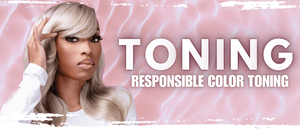
How to Properly Tone Hair: A Guide to Safe, Effective Toning
Toning is essential for achieving vibrant, balanced color, especially for blondes, brunettes with highlights, and those aiming for cool-toned shades. However, toning is a delicate process that requires careful handling to avoid over-processing, which can damage hair texture and color. Here’s a guide on how to approach toning with care, why it’s best to leave it to a certified master colorist, and the importance of strand testing before applying toner to your entire bundle or wig.
1. Understanding the Toning Process
Toners work by neutralizing unwanted brassy or warm tones, enhancing the hair's natural or dyed color. Most toners contain pigments to balance yellows, oranges, or reds, and while they’re not as harsh as permanent dyes, they can still alter hair texture if not applied correctly.
- Why Toning Needs Precision: Even though toning is often seen as a mild coloring treatment, improper application or timing can lead to uneven results or, worse, damage to the hair cuticle. This is especially true for human hair extensions, as these strands lack the natural oils that protect your own hair.
Loxx Hair Tip: Always approach toning as a precision task. The slightest misstep can result in color that’s too ashy, too warm, or patchy.
2. The Importance of Professional Toning
Given the intricacies of toning, it’s best to leave it to a certified master colorist who specializes in coloring and toning. Professionals have the expertise to choose the right toner formulation and timing for your specific hair type and color, which minimizes risks.
- Expertise Matters: Master colorists understand undertones, toner formulas, and how long each should process. Their expertise prevents the risk of over-processing or creating unwanted tones.
- Access to Professional-Grade Toners: Salons often use high-quality toners that aren’t available in drugstores or online. These professional-grade products are often gentler and more effective than their over-the-counter counterparts.
Loxx Hair Insight: By working with a certified colorist, you’re protecting the longevity and integrity of your hair while achieving the perfect tone.
3. The Role of Strand Testing
Before applying any toner to your entire wig or bundle, strand testing is essential. This process allows you to see how the toner will interact with your hair, ensuring that the end result matches your desired shade without risking the entire bundle.
- How to Conduct a Strand Test: Select a small, hidden section of hair, apply the toner, and let it process according to the instructions. Rinse, dry, and evaluate the results to determine if it’s the right shade and timing.
- Why It’s Important: Hair textures, colors, and treatments can all affect how the toner works. Strand testing helps avoid surprises by allowing you to make adjustments before committing to the entire head or bundle.
Loxx Hair Tip: Strand testing also ensures you can spot any adverse reactions, such as excessive dryness, so you can take corrective action before toning the rest.
4. Gentle Toning Products for Maintenance
If you wish to maintain your toned look between salon visits, consider gentle, color-depositing shampoos or conditioners that are designed for specific shades, like purple shampoo for blondes or blue shampoo for brunettes. These products help sustain color and reduce brassiness without requiring full toning.
- Use with Caution: Color-depositing products should be used sparingly, as excessive use can lead to buildup or unwanted tones. Follow the recommended frequency and consult with your colorist for a routine tailored to your specific hair type and color.
Stylist Suggestion: For regular maintenance, a weekly or bi-weekly color-depositing shampoo can help keep brassiness at bay while being gentler than toning treatments.



